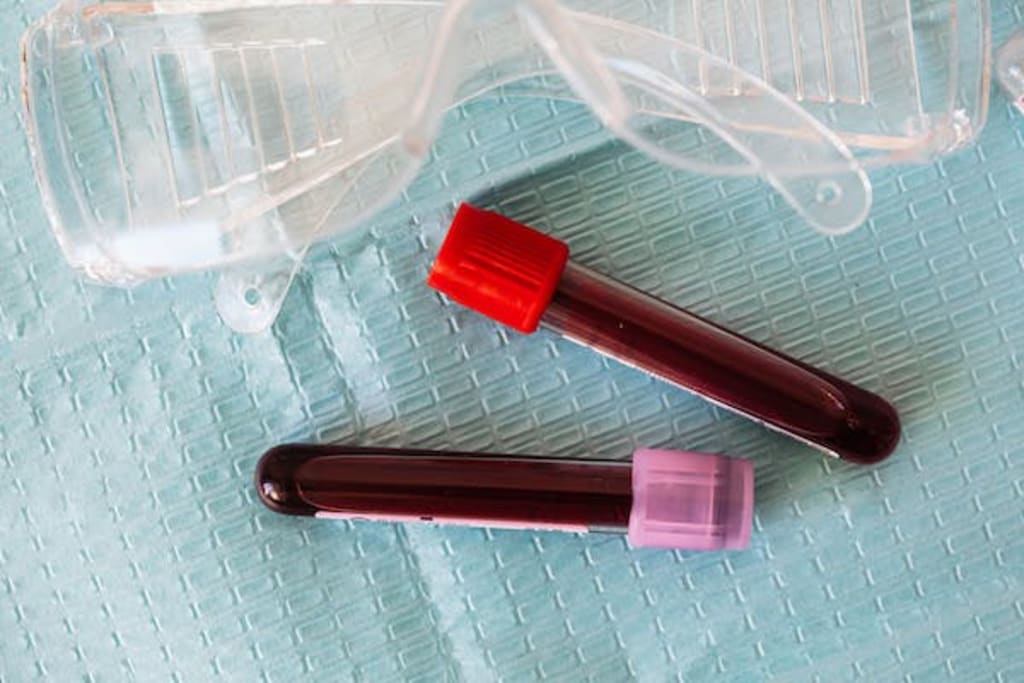
BLOOD
Blood is a special type of Connective Tissue that is composed of several types of cells suspended in a fluid matrix called Plasma
What is Plasma:
Plasma is a yellowish homogeneous fluid, a major component of plasma is water which constitutes about 90% of the volume and the remaining 10% dissolve solutes that dissolve in water components of plasma
About 80% dissolve solutes consist of Proteins (Albulins, Globulins, Fibrinogens)
The remaining 20% dissolve solutes consist of Nutrients (Glucose, Amino-acids, and Lipids)
The rest of the Plasma contains:
² Inorganic Salts,
² Electrolytes,
² Nitrogenous Compounds(Urea and Creatinine) ,
² Hormones, Enzymes, and Dissolve
² Gases (Oxygen, carbon dioxide, and Nitrogen)
Elements Of Blood:
Erythrocytes (RBCs)
Leukocytes (WBCs)
Platelets ( Cytoplasmic Fragments derived from Megakaryocytes)
What are Megakaryocytes:
Megakaryocytes present in Bone-marrow
Erythrocytes/ RBCs:
Erythrocyte has pale yellow or tan color due to their content of hemoglobin, in dense masses erythrocytes gives red color characteristics of blood
Under normal conditions, RBCs do not leave the circulatory system, Erythrocytes have a lifespan of 120 days
A mature Erythrocyte is shaped like a biconcave disc. It doesn’t contain a nucleus and is also devoid of typical cell organelles. In a living state erythrocyte measure about 7-8 micrometers in diameter,2.6 micrometers thick at the periphery(rim), and about 0.8 micrometers thick at the center
Erythrocyte enhances the surface area of the cell which facilitate gaseous exchange
What is anemia?
Disease in which reduction in oxygen carrying capacity of blood
² Decrease in the number of erythrocytes or reduction in the content of hemoglobin
Leukocytes:
Leukocytes possess a nucleus capable of ameboid movement and contain no hemoglobin
In adults normal total leukocytes count from 5000 to 10,000 cells per microlitre of blood
The count is higher in children
The number of leukocytes in blood may increase or decrease under certain diseased conditions
Leukocytosis:
A temporary increase in the number of leukocytes is called leukocytosis
Leukopenia:
Reduction in the number of leukocytes below the lowest normal range called leukopenia
Leukocytes classified into two main groups
Granulocytes (Presence of Specific Granules)
AGranulocytes (Absence of Granules)
Granulocytes:
² Neutrophils (40-75% of total WBCs, average diameter 7-9 micrometers in fresh blood)
² Eosinophils(2-4% of circulating leukocytes, same size as neutrophils,
constitute specific granules and azurophilic granules/lysosomes)
² Basophils(0.5-1% , measuring 7-9 micrometer in fresh blood and 10-12 micrometer in dried smears)
AGranulocytes:
Lymphocytes (T-lymphocyte/Cytotoxic T-cells, B-lymphocyte, Null cells)
Lymphocytes constitute 20-40% of total leukocytes in adult
In Children, lymphocytes constitute 30-70% of peripheral blood
² T- lymphocytes (70%)
² B-lymphocytes (25%)
² Null Cells (5%)
T-Lymphocytes are classified into three main types:
About 200 markers have been identified on the surface of T-Lymphocytes
CD3, CD4, CD8, CD28, CD40
² Effector T-cells (CD8)
² Regulatory T-cells (CD4) (TH1 cells , TH2 cells)
² Memory T-cells (Quiescent)
B-Lymphocyte are classified into two types:
B cells also express CD markers on their surface which are CD9, CD19, CD20, and CD24
² Effector B-cells
² Memory B-cells
Platelets:
Platelets range from 200,000 to 400,000 per microlitre of blood
The average life span of platelets is about 10 days
Platelets show 2 regions
² Granulomere (darkly staining central region)
² Hyalomere (lighter staining homogeneous peripheral zone, 15-20 nm glycocalyx coat)
Functions:
Platelets play an important role in hemostasis(stoppage of blood leakage from injured blood vessels)
thrombosis, and
wound recuperating
Hemopoiesis
The ability to self-renew, a divisional event that results in two HSCs, and the ability to multipotent differentiate into all mature blood lineages, that is, erythrocytes, platelets, lymphocytes, monocyte/macrophages, and granulocytes, are fundamental characteristics of hemopoiesis
The spongy substance inside your bones called bone marrow is the most prevalent location of blood cell formation. Medullary hematopoiesis refers to hematopoiesis that happens in your bone marrow. Blood cells are produced in the bone marrow and discharged into the circulation.
Other regions of your body, such as your liver and spleen, experience hematopoiesis less often. Extramedullary hematopoiesis refers to hematopoiesis that occurs outside of your bone marrow.
Hematopoiesis occurs in diverse parts of the body before and after birth
About the Creator
umamanidrah
Hello to all, My name is Umama Nidrah and by profession I'm a physiotherapist and I am seeking for Article writing , Blog writing that is related to health with some interesting initiatives which are also uptodate.






Comments
There are no comments for this story
Be the first to respond and start the conversation.